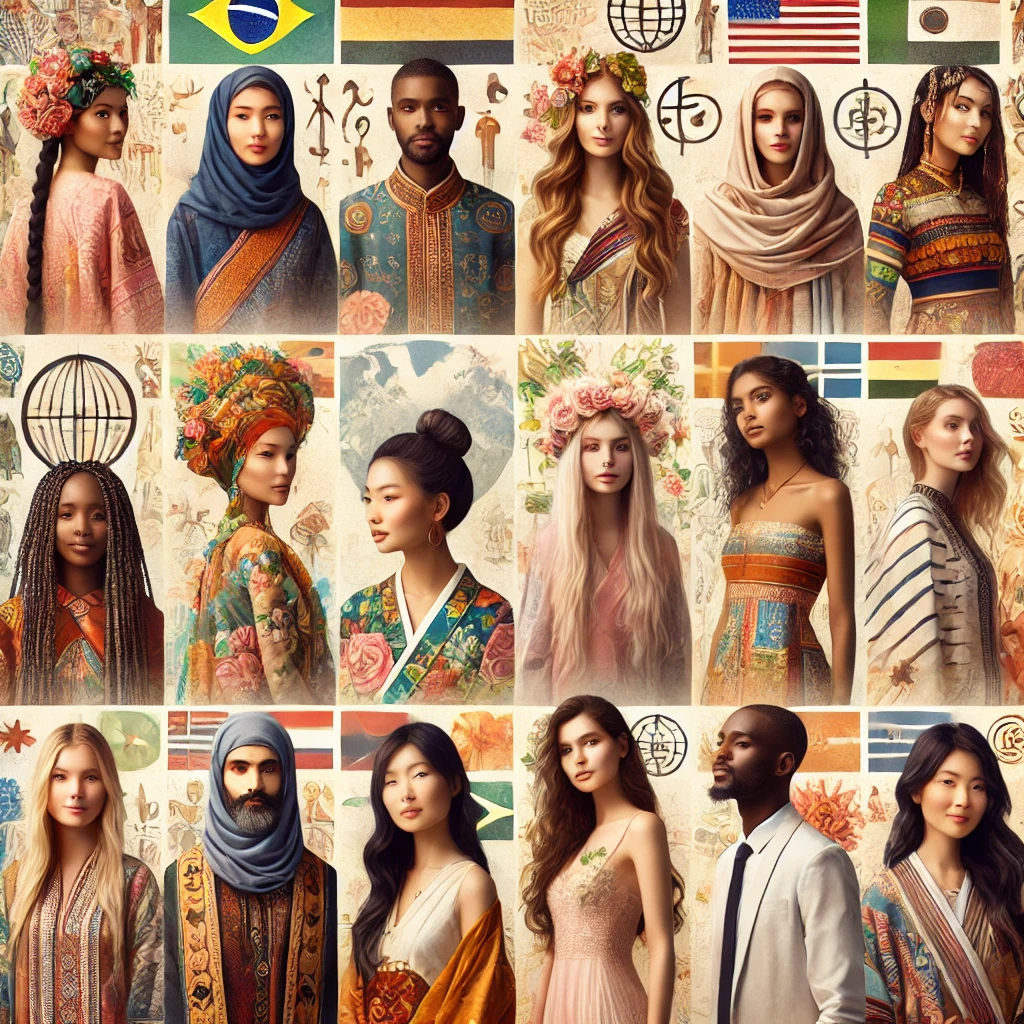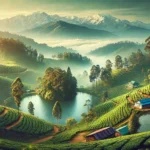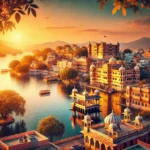Discover how beauty standards differ across cultures worldwide. Learn about the unique characteristics that define beauty in different regions and explore the rich diversity that shapes global perspectives on beauty.
Beauty is a concept that transcends borders, languages, and cultures, yet it is perceived differently across the globe. While beauty standards may vary, they often reveal deep cultural values, historical influences, and regional trends. This article takes you on a journey to explore the fascinating diversity of beauty standards around the world, showcasing how different cultures define beauty in unique and meaningful ways.
Table of Contents
What Are Global Beauty Standards?
Global beauty standards are the cultural ideals and perceptions that define physical beauty in various regions. These standards can be influenced by factors such as media, history, social norms, and even climate. While beauty ideals may have become more globalized in recent years, each country still maintains unique characteristics that represent its distinct heritage and cultural values.
Beauty Standards in Different Regions
1. Asia: Emphasis on Youthful Appearance and Fair Skin
In many Asian countries, especially in East Asia, beauty standards often emphasize a youthful appearance, flawless skin, and slender bodies. Fair skin is highly prized, which has historical roots in many Asian cultures where lighter skin was associated with nobility and wealth. Countries like South Korea, Japan, and China have thriving skincare industries aimed at achieving clear, radiant skin.
- Key Traits: Clear skin, youthful looks, petite features
- Cultural Influence: Historical significance and media portrayals reinforce these beauty ideals.
- Popular Icons: Celebrities like Bae Suzy from South Korea embody the K-beauty aesthetic, with a focus on natural elegance and fresh-faced beauty.
2. Africa: Embracing Natural Beauty and Cultural Identity
Africa, a continent rich in diversity, has beauty standards that vary greatly across regions. Many African beauty ideals focus on celebrating natural beauty, often with an emphasis on skin tone, natural hair textures, and unique facial features. In countries like Ethiopia and Nigeria, traditional attire and body adornments are also significant markers of beauty.
- Key Traits: Emphasis on natural beauty, unique hair textures, expressive eyes
- Cultural Influence: Pride in ethnic heritage and traditional beauty practices.
- Popular Icons: Liya Kebede, an Ethiopian model, represents African beauty with her graceful features and commitment to cultural authenticity.
3. Europe: Elegance and Minimalism
European beauty standards, especially in countries like France, Sweden, and Italy, often emphasize natural beauty and minimalism. There is a strong focus on enhancing one’s natural features rather than masking them, and many European women favor effortless elegance and understated charm.
- Key Traits: Minimal makeup, natural elegance, body positivity
- Cultural Influence: European cultures often value individuality and self-expression, leading to diverse beauty standards.
- Popular Icons: French actress Marion Cotillard embodies classic French beauty with her sophisticated and effortlessly chic style.
4. Latin America: Vibrant Beauty with Curves
Latin American beauty standards, seen prominently in countries like Brazil, Colombia, and Venezuela, often celebrate curvaceous figures, tanned skin, and expressive features. Women in this region are known for their confidence and embrace of vibrant colors and bold makeup styles, reflecting the warmth and energy of Latin American culture.
- Key Traits: Curvy figures, tanned skin, bold makeup
- Cultural Influence: A lively and passionate culture that celebrates bold expression.
- Popular Icons: Sofia Vergara, known for her beauty and charisma, is an iconic representative of Latin American beauty ideals.
5. Middle East: A Blend of Tradition and Modernity
In the Middle East, beauty standards reflect a blend of traditional values and modern influences. Women from countries like Lebanon and Iran are often celebrated for their striking facial features, including large eyes, well-defined brows, and full lips. Traditional clothing and makeup trends coexist with a strong emphasis on grooming and elegance.
- Key Traits: Defined eyes, full lips, a focus on facial features
- Cultural Influence: Traditional and religious influences shape beauty, often with an emphasis on modesty and elegance.
- Popular Icons: Lebanese actress Nadine Njeim embodies Middle Eastern beauty with her distinctive facial features and stylish flair.
Factors Shaping Global Beauty Standards
1. Media and Pop Culture
The influence of global media, from Hollywood to K-pop, plays a significant role in shaping beauty standards worldwide. Pop culture often introduces new trends that become widely accepted in different parts of the world, impacting everything from skincare routines to fashion choices.
2. Social Media and Globalization
Platforms like Instagram and TikTok have accelerated the spread of beauty trends, exposing people to diverse standards of beauty and promoting inclusivity. As a result, people can now appreciate and adopt beauty practices from different cultures.
3. Historical and Societal Contexts
Historical events and social structures have long influenced beauty ideals. In many cultures, lighter skin was historically preferred as it indicated wealth and social status. Today, however, beauty standards are evolving to embrace a broader range of features and styles.
4. Climate and Geography
Geographical factors, such as climate, also impact beauty standards. In tropical regions, tanned skin may be preferred, while in colder regions, fairer skin might be more common. These natural variations contribute to the diversity in global beauty.
The Impact of Social Media on Beauty Standards
The Evolution of Beauty Standards Over Time
While traditional beauty ideals often held strong sway over societies, today’s standards are far more dynamic. The global beauty industry has grown to include products and services that cater to a wide range of skin tones, body types, and aesthetic preferences. Movements promoting body positivity and diversity are challenging conventional beauty standards, creating space for more inclusive representations.
Embracing Diversity in Beauty
Global beauty standards are evolving to celebrate diversity, challenging the once rigid ideals of beauty. Countries like the United States and Canada, with their multicultural populations, exemplify how beauty standards are becoming more inclusive and representative of different ethnicities and body types. The idea of “global beauty” is no longer about fitting a singular mold but rather celebrating the unique traits that make individuals special.
Beauty standards around the world reflect an incredible array of cultural influences, histories, and values. As the world becomes increasingly interconnected, the concept of beauty continues to evolve, embracing inclusivity and diversity. By understanding and appreciating these differences, we can gain a richer perspective on what makes beauty so universally admired yet uniquely personal. Ultimately, exploring global beauty standards helps us recognize and celebrate the richness of human diversity, making the world a more accepting and beautiful place.








1 thought on “Exploring Global Beauty Standards: A Fascinating Look into Diverse Cultures”